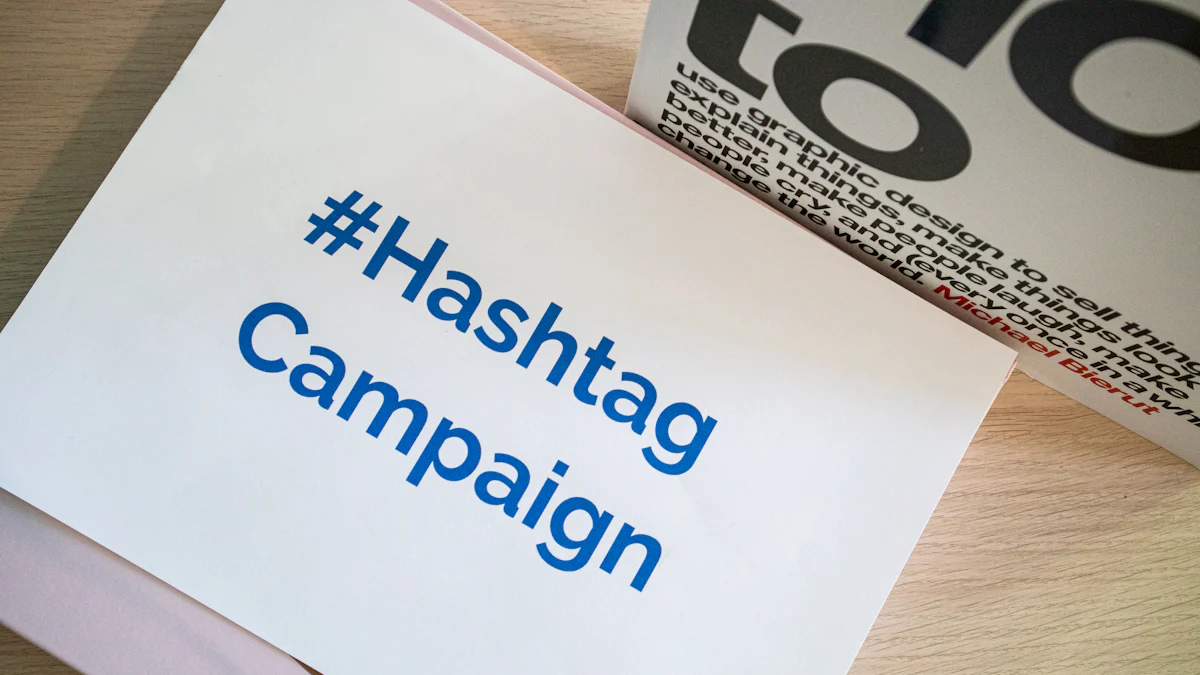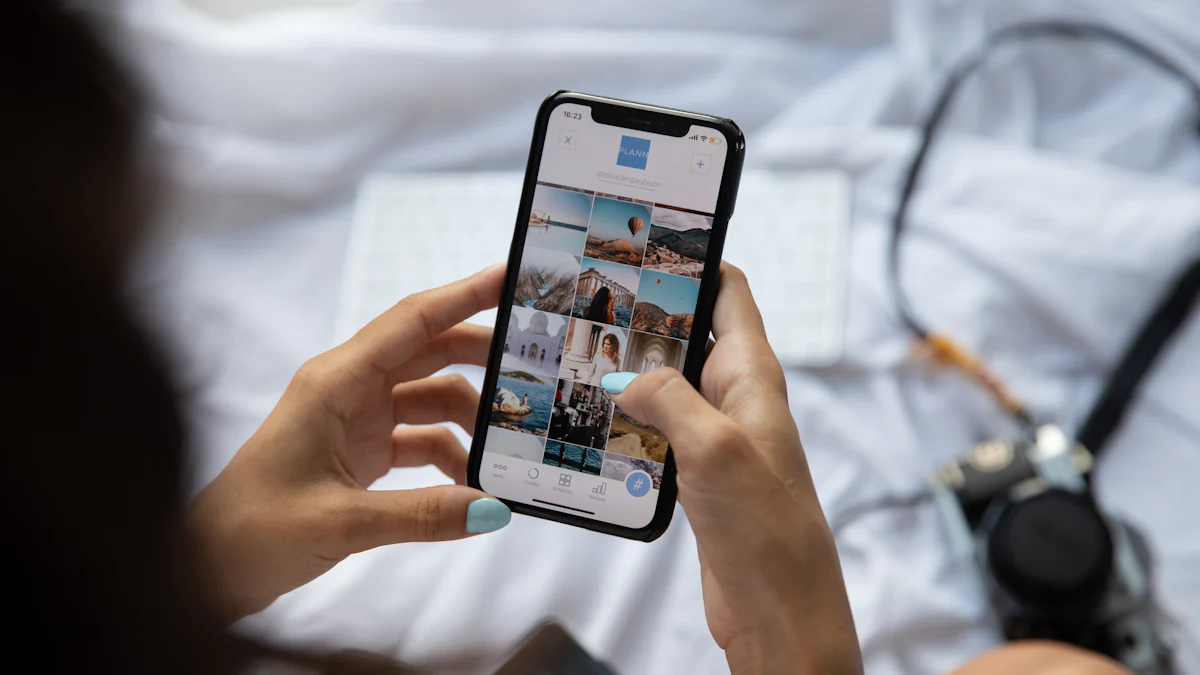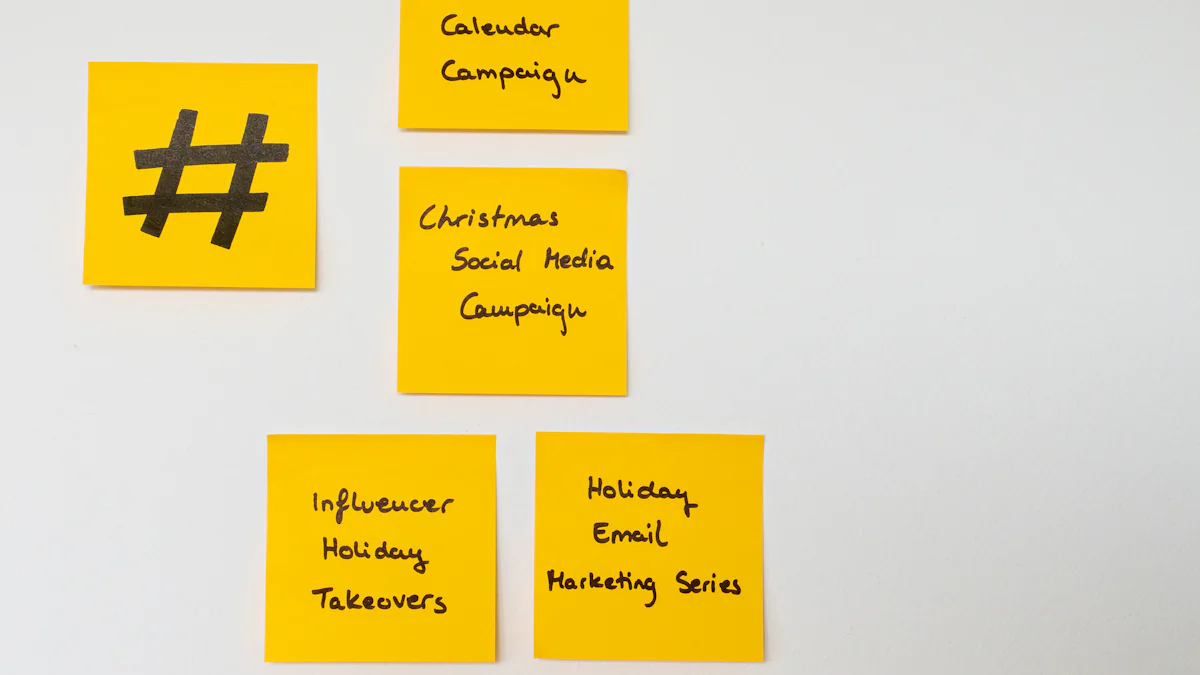Why B2B Influencer Marketing is a Game-Changer for Businesses

B2B influencer marketing has become a powerful tool for businesses aiming to build trust and drive growth. By collaborating with industry experts, you can amplify your brand’s message and connect with decision-makers more effectively. Research shows that influencer marketing in B2B delivers impressive results, including an average of 11 times higher ROI compared to traditional advertising. It also generates three times more leads, with conversion rates reaching approximately 13%. These outcomes highlight why businesses increasingly rely on this strategy to expand their reach and foster meaningful engagement.
Understanding Influencer Marketing in B2B

What is B2B Influencer Marketing?
B2B influencer marketing involves collaborating with industry experts to promote your brand, products, or services to other businesses. Unlike B2C influencer marketing, which often focuses on visually appealing and entertaining content, B2B influencers prioritize delivering educational and insightful material. Their professional tone and expertise help establish credibility, making them trusted sources of information for decision-makers.
This type of influencer marketing typically targets a longer sales cycle. B2B purchases require thorough research and involve multiple stakeholders. By leveraging influencers who share valuable knowledge, you can guide potential clients through the decision-making process more effectively.
The Rise and Relevance of B2B Influencer Marketing
B2B influencer marketing has gained momentum as traditional advertising methods lose their effectiveness. Businesses now seek authentic connections with their audience, and influencers provide a trusted bridge. Studies reveal that 75% of decision-makers trust brands associated with industry experts. Additionally, 92% of marketers believe that using influencers enhances brand consideration and customer acquisition.
The rise of digital platforms has further fueled this trend. Social media allows decision-makers to access diverse information, making them more inclined toward personalized and credible experiences. Data analytics also plays a crucial role, helping you tailor influencer campaigns to resonate with your audience.
| Aspect | Description |
|---|---|
| Data Analytics Integration | Influencer marketing is guided by data analytics, ensuring content resonates with the audience. |
| Audience Behavior Insights | Understanding audience behavior helps in identifying trends for effective influencer collaborations. |
How B2B Influencer Marketing Impacts Decision-Makers
B2B influencer marketing has a profound influence on decision-makers. Influencers with niche expertise attract highly engaged audiences who value their insights. Research shows that 67% of B2B buyers engage with influencer content during the research phase of their journey. This engagement helps you build trust and drive high-quality leads.
Influencers’ recommendations often carry more weight than direct brand promotions. Nearly half of C-Suite marketers agree that influencers grant brands more credibility than they could achieve independently. This credibility, combined with the halo effect, ensures that decision-makers view your brand positively, even outside the influencer’s core expertise.
By partnering with the right influencers, you can effectively guide decision-makers through the buyer journey, increasing conversions and fostering long-term relationships.
Key Benefits of B2B Influencer Marketing

Build Trust and Credibility with Target Audiences
B2B influencer marketing helps you build trust and credibility by leveraging the expertise of industry leaders. Decision-makers value influencers for their knowledge and authenticity, making their recommendations highly impactful.
- Influencers' opinions drive high-quality leads because their followers trust their insights.
- 75% of decision-makers trust brands more when they collaborate with industry experts.
- Expertise, trustworthiness, and authenticity are the most valued traits in B2B influencers.
You can measure the impact of influencer marketing on trust by evaluating the alignment between influencers and your brand. Authentic partnerships foster genuine storytelling, which strengthens trust. Using analytics tools, you can track how influencers contribute to audience engagement and adjust your strategies for better results.
Expand Reach and Engage Niche Markets
B2B influencer marketing allows you to connect with niche audiences that traditional advertising often misses. Influencers with specialized expertise attract highly targeted followers, helping you expand your reach effectively.
To evaluate your success in reaching niche markets, focus on key metrics:
| Metric Type | Description |
|---|---|
| Reach and Impressions | Measures the extent of influencer content and potential audience size. |
| Engagement Metrics | Includes likes, comments, and shares to gauge audience interaction with influencer content. |
| Conversion Metrics | Tracks tangible actions influenced by campaigns, such as sales and subscriptions. |
| Influencer Performance | Evaluates factors like engagement rates and content quality to identify effective influencers. |
By analyzing these metrics, you can refine your campaigns to engage niche audiences more effectively. This approach not only increases brand awareness but also ensures your message resonates with the right people.
Enhance Thought Leadership and Brand Authority
Collaborating with influencers positions your brand as a thought leader in your industry. Influencers often share valuable insights that enhance your authority and credibility. Research shows that 90% of marketers view B2B influencers as essential for staying informed, with 57% relying on them as a primary information source.
Partnering with influencers helps you differentiate your brand and lead industry discussions. For example, brands using Thought Leader Ads have achieved double the click-through rates compared to traditional ads. This strategy also reduces costs while increasing lead form completions by 48%.
By consistently sharing high-quality insights through influencer partnerships, you can build a community of engaged followers. These followers trust your perspective, which leads to enhanced brand awareness and long-term loyalty.
Drive ROI and Improve Marketing Efficiency
B2B influencer marketing offers a cost-effective way to drive engagement and conversions while maximizing your return on investment (ROI). By collaborating with influencers, you can streamline your marketing efforts and achieve measurable results.
Tracking ROI from influencer marketing campaigns requires a data-driven approach. Metrics like website traffic, time spent on your site, and conversions provide valuable insights into campaign performance. For example:
| Metric | Description |
|---|---|
| Traffic to website | Measures how many clicks influencers drive to your site, indicating their effectiveness. |
| Time on page/site journey | Indicates user engagement by tracking how long visitors stay on your site after arriving. |
| Conversion to MQL | Tracks how many leads fill out forms, showing which influencers drive the most conversions. |
| MQL to SQL | Measures the conversion of marketing-qualified leads to sales-qualified leads, indicating quality. |
| Revenue | Calculates the financial contribution of influencer content by multiplying conversions by value. |
Tailoring your measurement strategy to the campaign type ensures accurate results. Creating tracking URLs for each influencer helps you monitor their individual contributions. Setting benchmarks allows you to compare influencer efforts against other marketing strategies.
Case studies highlight the efficiency of influencer marketing. General Electric partnered with influencers for a social media campaign, achieving 3.5 million unique viewers and over 200,000 engagements. Adobe used influencers to showcase their products, increasing subscriptions and strengthening brand credibility. These examples demonstrate how influencer marketing can drive engagement and conversions while optimizing costs.
To improve efficiency, ensure influencers understand the key performance indicators (KPIs) they will be evaluated on. Clear communication fosters alignment and helps you achieve your goals. By leveraging the expertise of influencers, you can reduce marketing waste and focus on strategies that deliver the highest ROI.
Implementing B2B Influencer Marketing Effectively
Identifying the Right Influencers in Your Industry
Finding the right influencers is crucial for an effective influencer marketing strategy. Start by defining your campaign goals. Decide whether you want to increase brand awareness, drive sales, or grow your audience. Next, understand your target audience. Identify their demographics, interests, and preferred platforms. This helps you choose influencers who resonate with them.
You should also decide on the type of influencer that fits your needs. Mega influencers have large followings, but micro and nano influencers often deliver higher engagement in niche markets. Use tools like hashtags, tagged posts, and competitor analysis to discover potential collaborators. Platforms such as Impulze.ai, BuzzSumo, and Upfluence can simplify this process. These tools provide insights into influencer performance, audience demographics, and ROI tracking.
Aligning Values and Expertise for Authentic Partnerships
Authenticity is the cornerstone of successful B2B influencer marketing. To build authentic content, align the influencer’s values with your brand’s mission. Ensure their image and audience demographics match your goals. Open communication fosters mutual respect and strengthens partnerships.
For example, Absolut’s #AbsolutPlanet campaign demonstrated the power of shared values. By collaborating with sustainability-focused influencers, the brand reinforced its commitment to social responsibility. This alignment led to meaningful engagement and enhanced brand credibility. When you collaborate with influencers who share your vision, you create authentic connections that resonate with your audience.
Developing Content Amplification Strategies
Amplifying influencer content ensures your message reaches the right audience. Start by educating influencers about your products or services. Invite them to company events to immerse them in your brand. Storytelling workshops can help align their content with your values.
Focus on long-term relationship building to maintain consistency across campaigns. Partnering with niche influencers allows you to engage highly targeted audiences. Distribute content across multiple platforms to maximize visibility. Encourage influencers to create authentic content that builds trust with their followers.
By implementing these strategies, you can create a B2B influencer program that drives engagement and delivers measurable results.
Building Long-Term Relationships with Influencers
Building long-term relationships with influencers is essential for maximizing the impact of your B2B influencer marketing strategy. Strong partnerships foster trust, improve collaboration, and lead to improved engagement over time. To create lasting connections, you need to focus on mutual value and consistent communication.
Here are six best practices for nurturing long-term influencer relationships:
- Foster a Collaborative Relationship: Involve influencers in your strategy from the start. Share your goals and encourage open communication to align expectations.
- Provide Value to the Influencer: Offer exclusive access to your products, services, or events. Providing resources that enhance their content strengthens the partnership.
- Focus on Long-Term Engagement: Avoid one-off campaigns. Sustained collaborations build deeper trust and allow influencers to represent your brand authentically.
- Measure and Optimize Performance: Track key metrics like engagement and conversions. Share feedback with influencers to refine future campaigns.
- Maintain Authenticity: Let influencers communicate in their own voice. Authenticity resonates with their audience and reinforces credibility.
- Leverage Their Network: Encourage influencers to introduce you to other industry leaders. Expanding your network can open doors to new opportunities.
Challenges may arise when maintaining long-term partnerships. For example, brand alignment can drift over time. Regular check-ins help ensure shared values remain intact. Communication issues can also occur. Address these by initiating direct conversations to resolve misunderstandings. If an influencer promotes a competitor, discuss the implications promptly to maintain authenticity.
Long-term relationships require effort but deliver significant rewards. Influencers who feel valued and aligned with your brand will advocate for you more effectively. This approach ensures your influencer marketing campaigns remain impactful and sustainable.
Measuring Success and Adapting Strategies
Key Metrics to Evaluate Campaign Performance
Evaluating the performance of your influencer marketing campaigns requires tracking key metrics that align with your business goals. These metrics help you measure success and identify areas for improvement. Start by focusing on engagement, which includes likes, shares, and comments. High engagement indicates that your audience finds the content valuable.
Next, monitor reach and impressions. Reach measures the number of unique viewers, while impressions track how often the content is displayed. Click-through rate (CTR) is another critical metric. It shows the percentage of viewers clicking on links within the content, reflecting its effectiveness in driving traffic. Conversion rate measures how many viewers take desired actions, such as signing up for a newsletter or making a purchase.
Finally, calculate ROI to assess the profitability of your campaigns. Share of voice is also essential. It evaluates how much your brand contributes to industry conversations, showcasing your increased credibility. By analyzing these metrics, you can ensure your campaigns deliver measurable results.
Gathering Insights to Refine Future Campaigns
Gathering actionable insights from your campaigns helps you refine future strategies. Start by setting clear objectives, such as increasing brand awareness or driving sales. Select key performance indicators (KPIs) like engagement, reach, and conversion rates to measure success.
Use analytics tools to track metrics in real time. These tools allow you to identify trends and adjust your campaigns accordingly. Compare your performance with industry benchmarks to pinpoint areas for improvement. Regularly evaluate influencer contributions to understand what works best. This approach ensures your campaigns remain effective and aligned with your goals.
Adapting Strategies for Sustained Impact
Adapting your strategies based on data findings ensures long-term success. Adjust content types and posting frequencies to match audience preferences. Use analytics tools to monitor performance and make swift changes when necessary.
Collaborate with influencers to optimize their contributions. Encourage them to create content that resonates with their audience while aligning with your brand. Regularly review campaign results to identify opportunities for growth. By staying flexible and data-driven, you can maintain increased credibility and achieve sustained impact in your b2b influencer marketing efforts.
B2B influencer marketing offers a proven path to long-term business growth. Influencers generate high-quality leads and foster lasting relationships, which drive sustained brand exposure.
| Evidence Type | Description |
|---|---|
| High-Quality Leads | Influencers' recommendations lead to an increase in qualified leads. |
| Long-Term Relationships | Partnerships with influencers ensure consistent growth and visibility. |
To unlock its full potential, follow these steps:
- Identify influencers who align with your audience and industry.
- Build genuine, collaborative relationships.
- Create authentic, valuable content with influencers.
- Measure campaign success and refine strategies.
Now is the time to embrace this strategy and position your business for success.
FAQ
What is the difference between B2B and B2C influencer marketing?
B2B influencer marketing focuses on building trust through expertise and educational content. It targets decision-makers in businesses. B2C influencer marketing, on the other hand, emphasizes emotional appeal and entertainment to attract individual consumers. The goals and audience engagement strategies differ significantly between the two.
How do you measure the success of a B2B influencer campaign?
You can track metrics like engagement (likes, comments, shares), reach, and conversions. Use tools to monitor website traffic, lead generation, and ROI. Comparing these results to your campaign goals helps you evaluate performance and refine future strategies.
How do you find the right influencers for your industry?
Start by identifying your target audience and campaign goals. Use tools like BuzzSumo or Upfluence to analyze potential influencers’ expertise, audience demographics, and engagement rates. Focus on those who align with your brand values and have credibility in your niche.
Can small businesses benefit from B2B influencer marketing?
Yes! Small businesses can collaborate with micro or nano influencers who have niche audiences. These influencers often deliver higher engagement and cost less than mega influencers. This approach helps small businesses build trust and reach targeted markets effectively.
How do you ensure authenticity in influencer partnerships?
Choose influencers whose values align with your brand. Let them create content in their own voice. Avoid overly scripted campaigns. Authenticity comes from genuine storytelling and trust between you and the influencer.
Tip: Regularly communicate with influencers to maintain alignment and foster long-term relationships.
See Also
Best Platforms for Influencer Marketing in E-commerce
Grasping the Return on Investment in Influencer Marketing
Key Influencer Marketing Statistics for Effective Strategies
